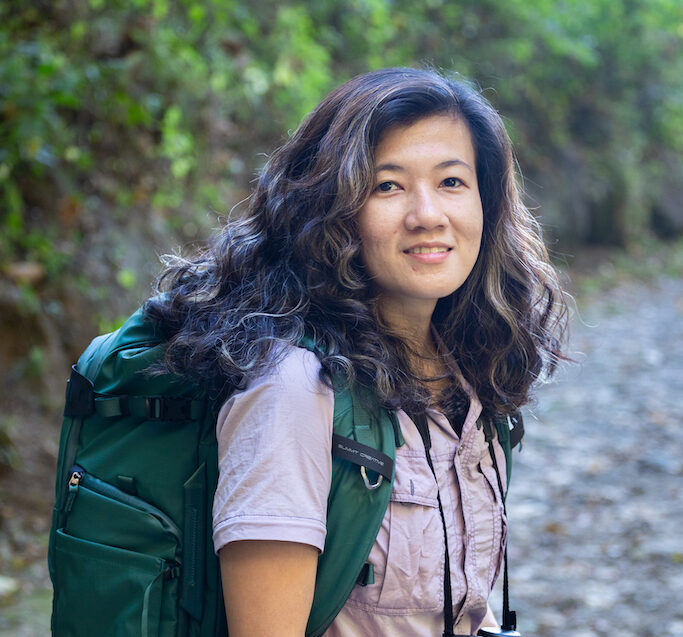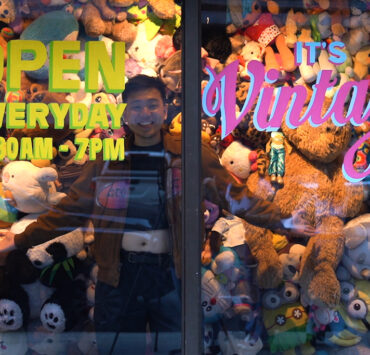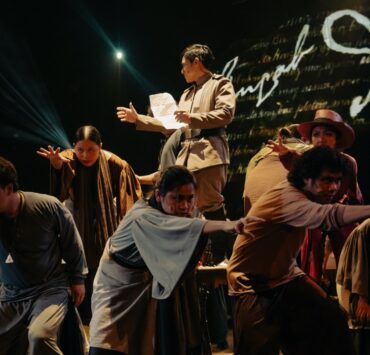Celine Murillo has always felt connected to trees. Even before she became known for her conversational Biology lessons about Philippine native trees, birds, and other local fauna and flora on TikTok, she remembers spending most of her childhood in nature.
Before her TikTok fame, Murillo was an Economics instructor(!), a career she naturally followed as a Business degree holder. Today, while her videos are more about biodiversity, she says her academic background has helped her better understand the root cause of the triple ecological crises (climate change, pollution, and biodiversity loss): capitalism.
“It allows me to approach my work in a grounded and more compassionate manner; understanding that individual shortcomings are upshots of larger systemic failings and that to achieve collective liberation, we need to acknowledge and emphasize the intersectionalities of our causes,” she says.
Pre-TikTok, she already had a personal blog, where she advocated for budget-friendly and eco-responsible travel. It started in 2014 as a way to cope with the loss of her mother. This went on until the easing of the pandemic lockdown when she and her husband found themselves traveling around the country in a second-hand van.
“This allowed me to contribute to different local and abroad publications,” she said of this time. “In the years that followed, I delved into photography and filmmaking to supplement my writing.”
Her documentary work exposes the underlying issue of biodiversity loss in the country through a visual medium. The recognitions and grants that followed empowered her to take on more assignments as an environmentalist-storyteller, oftentimes in the last vestiges where humans harmoniously cohabitate with nature before capitalism disrupted this delicate balance.
In 2019, for example, with the support of the Biodiversity Finance Initiative of the United Nations Development Program, she made a film about the critically endangered tamaraw for the benefit of the Tamaraw Conservation Program and its rangers. This, she said, made her fully understand and experience firsthand the power of storytelling in advocacies and movements.
Three years later, in 2022, she was chosen as one of the Young ASEAN Storytellers by the ASEAN Centre for Biodiversity. She traveled to Bukidnon in Mindanao to learn about the Mt. Kitanglad Range Natural Park and the indigenous Talaandig, Bukidnon-Daraghuyan, and Higaonon tribes. From this immersion came a series of multimedia stories entitled “Sa Yakap ng Kitanglad,” which aimed to increase awareness of Mt. Kitanglad Range Natural Park as a sustainable tourism destination, a wildlife research venue, and a cultural learning hub. “This was such a profound experience for me, learning and seeing how Indigenous peoples coexist with the natural world.”
It was also in 2022 that she decided to join TikTok, which was once a nascent platform known for its quick and witty videos made by scrappy users. At least on the surface. When Murillo joined the video-sharing app, it was already being weaponized for a disinformation campaign that would ultimately help Ferdinand Marcos Jr. secure the presidency in a hotly contested election year.
[READ: Filipino ‘tita’ helps keep TikTok a safe space via Inquirer Technology]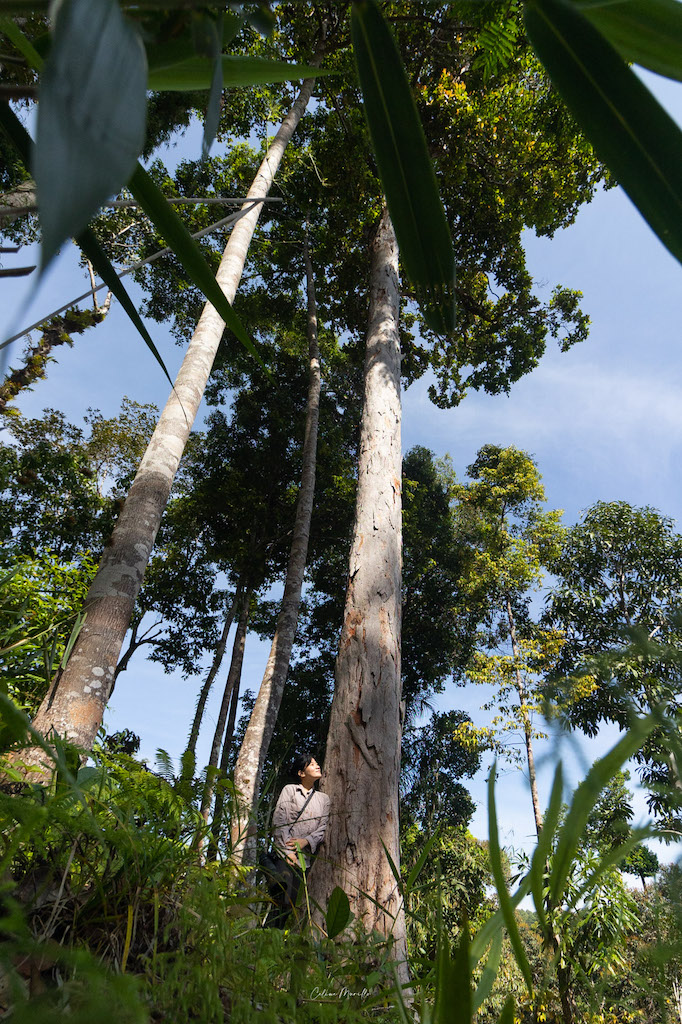
In the aftermath of that fraught election year, her content is a hopeful reminder of the good that can come out of a coopted platform. In her videos, Murillo levels with the viewer. In her uniform of a pale purple safari-esque shirt, she takes her followers on an immersive trip around the Philippines, introducing them to various overlooked native trees, bizarre wonders of nature, and birds of varying plumage, all the while teaching us how to better care for the last of our land and its inhabitants.
“In this digital age, I wanted to adapt and do whatever it takes to further the cause and spread my message, to promote and mainstream Philippine biodiversity and natural heritage. Hence, my short-form videos.”
In this interview, Celine Murillo talks about her pivot to TikTok to reach more audiences, creating a relatable persona while remaining informative, the pitfalls of being an environmentalist in one of the deadliest countries for people in the field, and dealing with the emotional toll of her environmental advocacy without ever losing sight of the end goal.
This interview has been edited for brevity and clarity.
How did you realize that the next content frontier is TikTok, especially if you want to reach a wider audience?
I started thinking about getting into TikTok in 2022, particularly during the presidential elections, noticing that many Filipinos are in there, and how effective it is in swaying public opinion—for better or for worse. I played with the possibility of using it to amplify environmental and climate issues.
When I became a fellow at Climate Tracker Asia’s Digital Content Creators Hub in the same year, we had a learning session with reporter Jacque Manabat. Her experiences as a field reporter utilizing TikTok helped me better understand how crucial it is for storytellers and communicators.
This, along with my realization that the movement seemed to have stalled because we were all just in an echo chamber, made me decide to start creating for TikTok. In 2023, I made it one of my New Year’s Resolutions to establish a presence there.
Were there content creators who covered similar content or otherwise that gave you that template to work with?
Initially, I made NatGeo, Discovery Channel, and BBC Earth footage as my pegs, but I later realized that they’re “too Western” and impersonal.
Can you walk us through your process of producing content for TikTok?
The process starts with going to the outside and looking at trees and plants. Basically, lose ourselves there. Then I identify the plants, often with the help of enthusiasts and citizen scientists, and start creating a script. I read a lot of online papers and articles, too, and consult my tree/plant/bird books, field guides, and expert mentors to help make my work factual and accurate. My work is built on the work of scientists, Indigenous wisdom, and local culture.
Then, my husband Dennis and I go back to the forest and film. He serves as my videographer, a full crew if you ask me. It takes us half a day to film two to four videos. The editing takes just a few hours. I use the in-app editing suite of TikTok.
I also utilize the reply-with-video feature for possible content ideas. That way, I get to interact with the community and they get to contribute to the conversation.
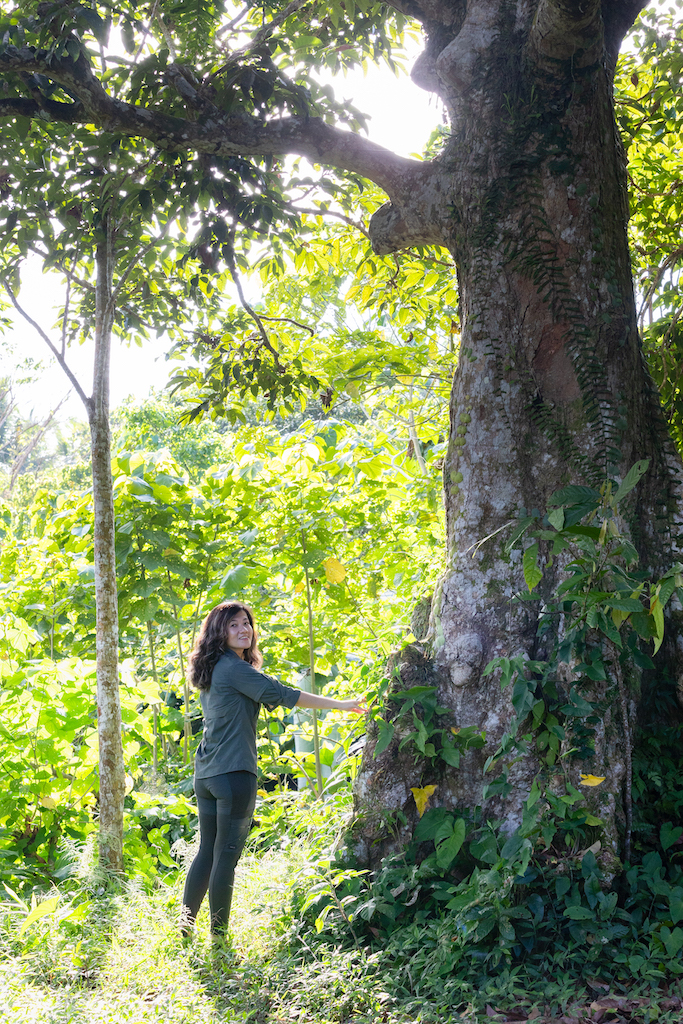
My work is built on the work of scientists, Indigenous wisdom, and local culture.
Let’s talk about how soothing your voice is. It’s authoritative yet conversational. Is that something you had to learn and cultivate as a vlogger, kind of like how there is a unique speech pattern normalized by many content creators?
Thank you for saying that. My voice has actually been one of my insecurities growing up. Relatives often comment on how “deep” and “big” it is. I also can’t pronounce hard “R” sounds so I was teased about that, too. I was very conscious of it, but eventually, I learned to embrace it.
The voice I use in my short-form videos is a modified version of my “teacher’s voice” from my years as a college instructor. It’s softer because I’m in the forest, not in front of a class. The intonation and cadence are different when I record poetry and, of course, when I speak conversationally, but that’s essentially how I really sound in real life.
I never really mulled over what “voice” to use, as long as I deliver my message clearly and accurately.
When you started on TikTok, you were primarily doing voiceovers on snippets of your longer-format videos. It wasn’t until more than a year after your first upload that you started showing your face, introducing yourself in your videos, and doing simultaneous spiels throughout your videos as you shoot them. What lead to that change?
That’s right. My first videos were more “highly produced” but impersonal. I was worried that if I put my face in the video, whatever I was featuring would have to share the spotlight with me, but I found that’s arrogant and very human of me to think that way. Nature can never be upstaged.
Looking back, I also realize how half-hearted those first few videos were. They were not really made for short-form content. Not as intentional. They were merely offshoots of our long-form videos. So I guess that’s why the reception was also a bit lukewarm.
When I started showing my face, the first ones were still in English, and I got a lot of feedback to do it in Tagalog. I was reluctant because, having spent a lot of time in Mindanao, I knew I might alienate many people if I used Tagalog (contrary to Manila-centric belief, Filipinos who do not speak mainly in Tagalog outnumber those who do). I compromised by including English subtitles and speaking a bit of Binisaya-Cebuano, and Bikolano sometimes.
I noticed an increase in views in the video about mahogany. But it was truly when I started showing myself, speaking in Tagalog, and presenting the message in an explainer but conversational way, did the views take off. You really must know and speak the language of your intended audience if you wish to get through.
@celinemurillo_ Replying to @BountiddiesHunter So you want to know about #Mahogany? #philippinenativetrees #philippinenativetree101 #philippines🇵🇭tiktok #learontiktok #forestregeneration #philippinewildlife #philippinebiodiversity
♬ Aesthetic – Tollan Kim
What other insights did you glean from your TikTok success?
What I learned can be applied to all platforms and in creating in general. I think you just really have to know and enjoy what you’re talking about because that would reflect in whatever you create. I particularly love doing series and I’ve found that viewers are also supportive of it.
It’s also important to be consistent, not just with the frequency but with the actual content. I hope that my undying and everlasting love for the natural world comes across in my videos and that, along with the information and wonder, would also encourage viewers to care and act.
Intentions are also crucial. You have to get it down and ingrained in your being before you start creating. That way, you can tell your ego to chill when it tries to get in your way.
It’s the same with our long-form videos. Dennis and I have always been clear about what kind of direction we want to go, and what kind of content we want to be known for. That’s why we avoid riding on trends, and always strive to honor our vision and those of the ones we portray.
At the end of every video, you put out a reminder to repost your original videos and with credit. How did that come about?
Ah, yes. I don’t want people to reupload, I want them to share the link to the original. And that was a result of a jewelry page on Instagram reposting my video about Philippine Native Trees being taught in school and getting more views than my original upload. That was honestly just my ego wanting credit and validation. I stopped doing that in some of my recent videos, but my husband convinced me to reinstate it since it’s also a call to action. By sharing the original and not “grabbing” it, viewers would be able to help me continue my work.
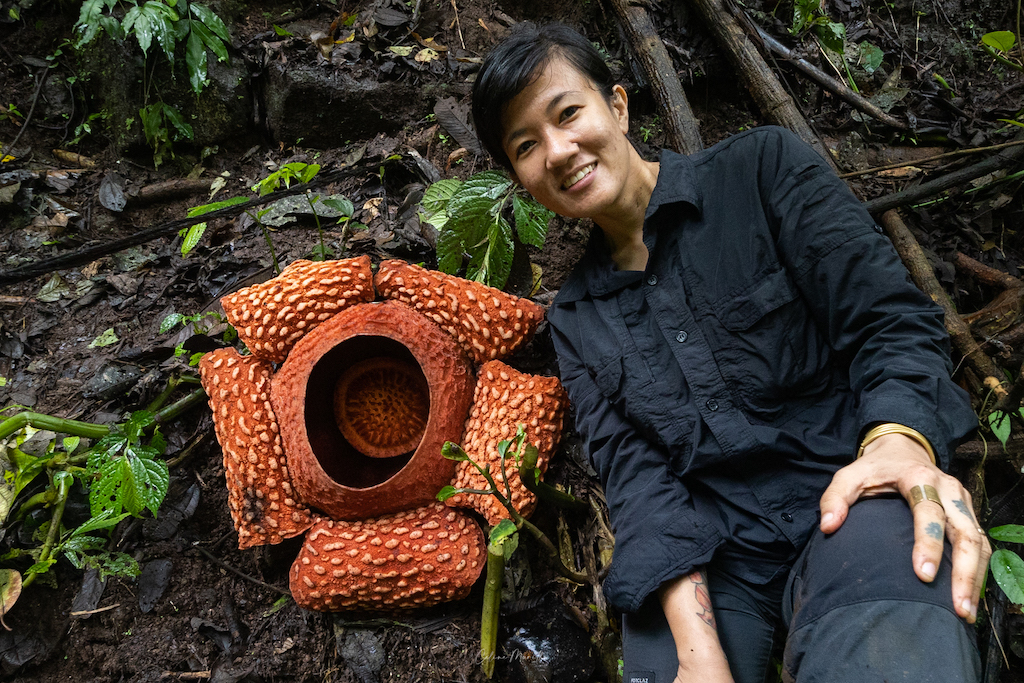
You have also begun to incorporate other species into your series, particularly birds. How is it different this time that you’re documenting birds for bite-sized videos compared to when you were doing long-form videos?
I love the natural world, but my biases have always been trees and birds. And fungi. So sooner or later, they will start showing up in my content. I don’t put them out as often because birds are harder to film than trees. Plus, I’ve been clear in the beginning: I want to promote and mainstream Philippine biodiversity, and that includes all kinds of creatures and habitats.
Are there unexpected consequences to your TikTok fame?
Well, my physical appearance sometimes gets scrutinized and I don’t enjoy that. But that’s not really unexpected, and I psyched myself up for that before committing to this work. Thankfully, I’ve done some inner work and have tools to manage triggers when they come. Those are not okay, of course, and must be dealt with as well, but in the grand scheme of things, this is not about me.
One thing I really love, and was not expecting but really hoping for, is how my videos appeal to apparently all ages! I get messages from senior citizens and young kids (through their parents) alike! This affirms what I’ve been saying all along: Science and nature are for everyone!
Our privileges must rattle us into making sure that doors of opportunities remain open for the disenfranchised and the marginalized
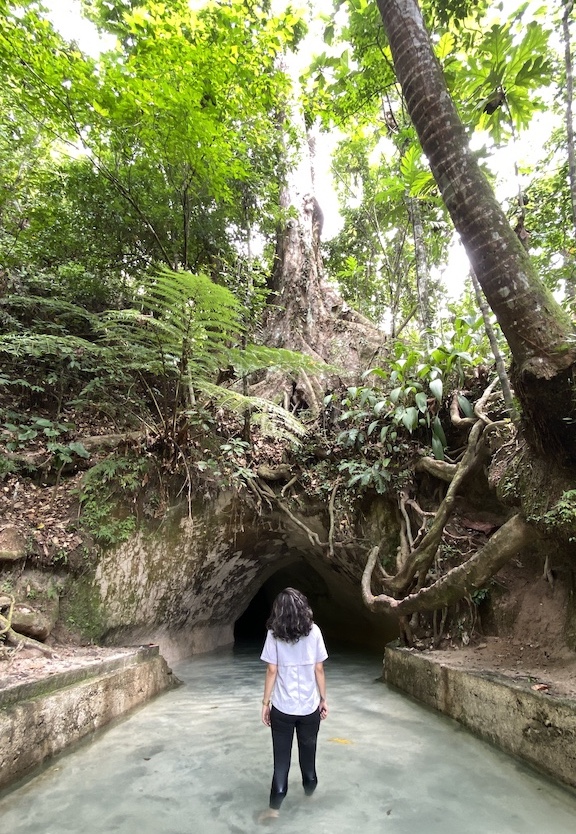
One aspect that’s usually lost in spotlighting advocacies, is that it takes funding. For people like you who have dedicated their lives to their causes, that’s oftentimes on top of day-to-day expenses. How do you account for that? Is it a viable means of earning a living?
I always remind myself and others that I am able to do this work because there is an element of privilege at play. Firstly, my husband and I are child-free and we don’t have family members relying on us financially. I’m also privileged to have had a hardworking mother who built a second house in her hometown of Sorsogon, which I inherited when she passed, becoming our residence.
On a personal level, since we devoted our lives to advocating for the natural world, my husband and I are very mindful of how and where we spend our money. A bulk of our expenses is for food, and I’m vegan and he’s vegetarian, so it’s relatively less expensive since we buy from the local palengke.
Whether or not this is a viable source of livelihood, I have this to say: For those like me who are able to satisfy their basic needs, it’s our responsibility to work and pave the way so that more people can transcend the toil of daily life, and thrive, not just survive. Our privileges must rattle us into making sure that doors of opportunities remain open for the disenfranchised and the marginalized so they too can have a seat at the table—at the very least, enter the room.
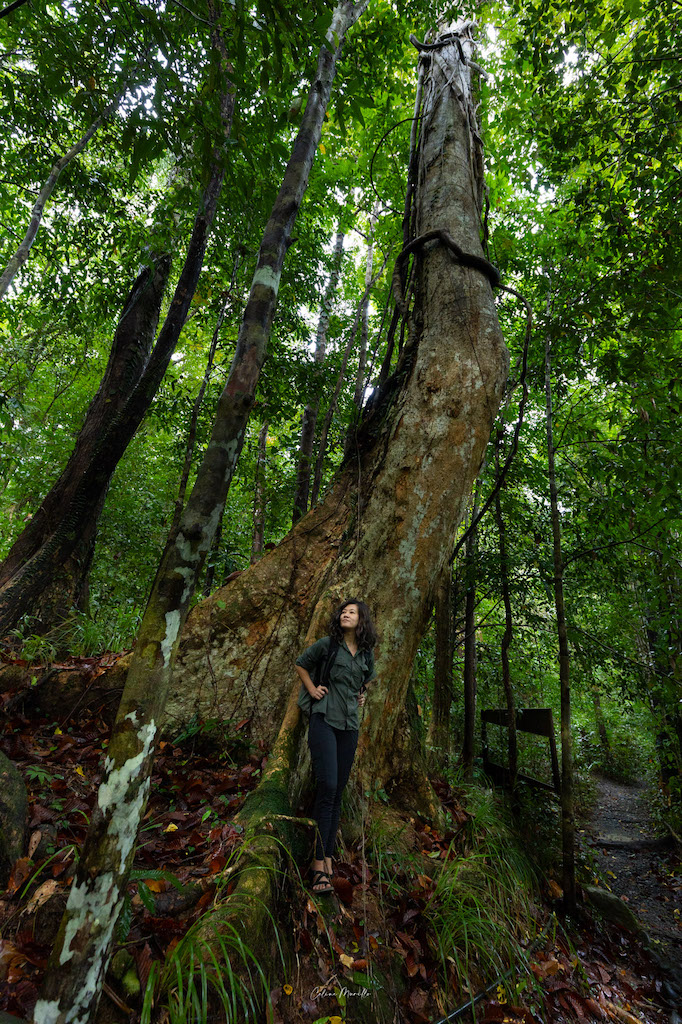
In an interview, you admitted to having regular bouts of “functional loneliness and exhaustion,” especially as you are often hundreds of miles away from home. Though surrounded by wonders and even when you are doing something for the greater good, sadness can creep in. But you are quite productive despite these “bouts.” How do you manage to overcome these to continue with your advocacy without compromising your mental health?
I love this question the most! I always say that doing this work is both rewarding and heartbreaking because along with the awe and wonder, as you said, is a profound sorrow and loss. What I’ve learned is that it’s important to hold all these emotions together and tenderly, no matter how conflicting they may seem. We must make space for these and be radical in our feelings and reckoning because the systems in place push us to be unemotional and inattentive. Acknowledging and sitting with our emotions, even the unpleasant ones, is a form of resistance.
What also helps is recognizing that I am part of a collective. When I am tired, I rest because I know that others are still doing the work that needs to be done. When I need connection, I reach out to my circle. I ask for help. I ask to meet up. I talk it out.
This is the power of community: there is space for rest, reciprocity, renewal—just as nature intended.
While there are real-life threats—one, the Philippines being a hostile, nay, deadly, country for environmentalists—I think one of the newer and prescient dangers you encounter now by nature of your medium is red-tagging, which has become rampant in social media in recent years. How do you go about those?
I’ve experienced being red-tagged on TikTok twice, and it is alarming and frightening. I think safety measures can be improved, both from the platforms and from our governments.
My work is important and I will not let malicious comments get in the way. However, we should not discount these. They must be called out and addressed. We are fighting for a better, kinder, more compassionate world, and that includes being able to express one’s self in whatever platform and form without fearing for one’s safety.
We sometimes fall into helplessness, a debilitating pessimism about whether or not we can do something to make things better. I interviewed environmental journalist Whitney Bauck about climate nihilism, and one of her solutions is to empower people to know that they can be part of the solution. Your work also does that and not just by connecting to people online, younger people on TikTok even, but by actually interacting with Indigenous peoples’ communities. How then do you communicate with your audience and but more importantly, to underserved indigenous peoples, that they too have power over these environmental issues? Or do you find that often you learn more from these communities given their embeddedness in and history of being attuned to nature?
You know, this is actually why I do this. I want my work to allow people to do what they can and lean into their respective roles in what activists call the “Ecosystem of Change.” There is space for everyone!
It all starts with knowing and being familiar, and from there, one can decide on which front they are most needed in and most useful for. For me, I can contribute the most as a storyteller, and I want my work to say that social media can be a force for good!
It’s also worth emphasizing that sometimes, you are not the best person to tell the story. Sometimes, all you need to do is make sure the right people have a platform, let them speak for themselves, and help amplify their message. I think that’s what many of my peers forget, especially when it comes to Indigenous people. They are the best teachers next to nature, and we need to hear them out, consider their perspectives, and give them a seat at the table if we hope to stand a chance of overcoming these crises we face.
I also think that while it is vital to raise awareness about the grim realities of our present and future, it is also equally important to instill hope and wonder. When we are called to be in awe of nature, to find comfort and connection in the natural world, there’s a greater chance we’ll be moved to protect it. 🌱

